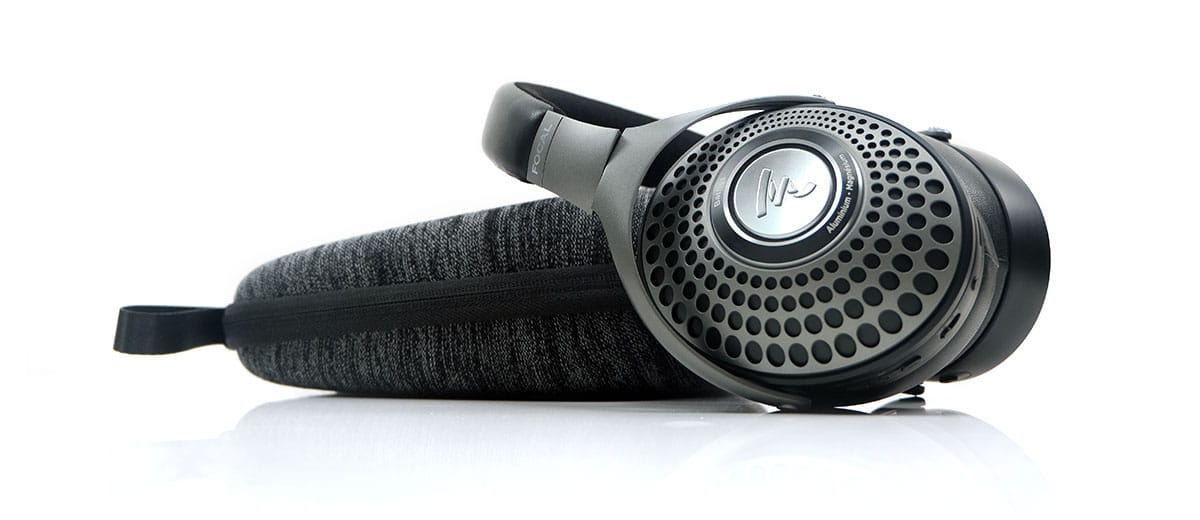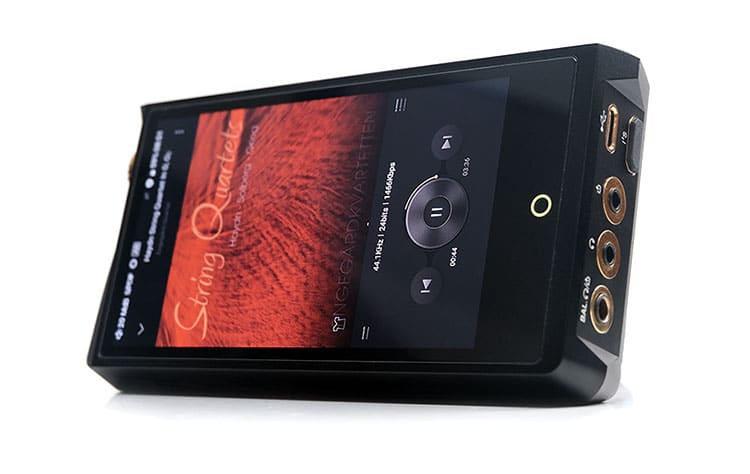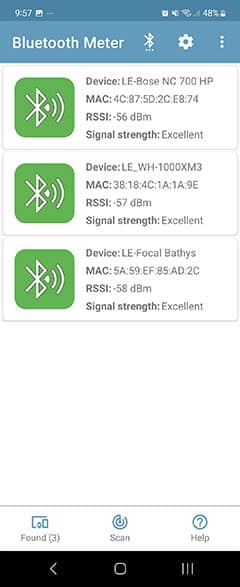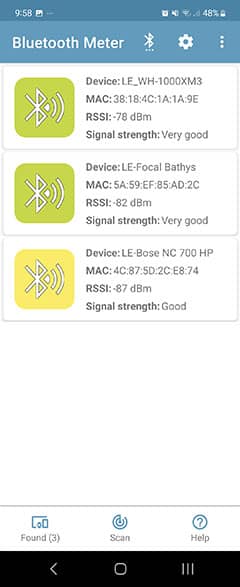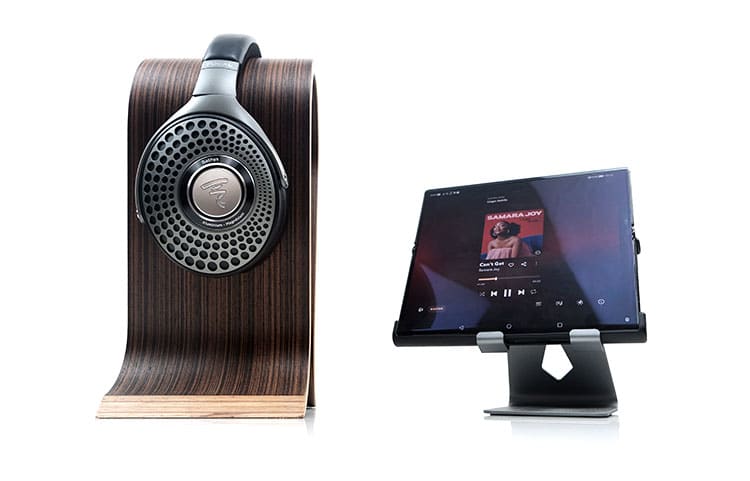Sound Impressions
Impressions are written with the Bathys primarily in wireless operation with an additional section on its USB-DAC performance further down.
Summary
The Focal Bathys is probably one of the more Harman-friendly wireless performers out there. It has a fairly beefy low-end combined with a relatively forward midrange including vocal presence and a relaxed treble with just a slight uplift at the very top.
It sounds smooth, fairly dense, and quite powerful when called upon. This is a relatively warm to natural tuning and slightly dark up top via wireless and a little more neutral with more treble contrast going USB-DAC and wired. It is also increasingly dynamic and tighter sounding via its USB-DAC, (wired).
It plays well to vocal-centric modern pop music but is perhaps a little more limited in acoustical spacing for a truly expansive arena-like composition.
Yes, you can get taller and airier offerings such as the Ananda BT from HIFIMAN but that is a wireless open-back headphone and an entirely different use proposition in my book.
The Bathys certainly outperform the current wireless closed-back headphones I have here in the office. That includes the likes of the Amiron Wireless which sounds somewhat messy in its tuning and a bit lifeless through the mids in comparison.
Even the Drop Panda, which I enjoy a lot, sounds more limited both in terms of available acoustical space and driver technical capability.
Frequency Response
Up to the lower mids, the Bathys is almost a picture-perfect Harman Target curve with a lifted bass shelf peaking around 50Hz then a gentle slide down to 200Hz though I would hesitate to call it sub-bass dominant. Powerful and relatively punchy but not overly pervasive.
In ANC BT mode it does offer a bit more bloom and softness, however, the USB-DAC mode significantly tightens up the response and drops the overall weight a tiny bit around that 50-60Hz marker. The dynamic range from the bass response from the USB-DAC mode is also a lot more impressive-sounding quicker and more impactful in the process.
Lower-mids have a little bit of a suck-out just below the 1k marker but it’s quite narrow and not immediately noticeable unless everything is pitching around 800-900Hz.
Beyond that, the Bathys is more forward in its tuning but just shy of a typical Harman head gain peak level from 1-3k. Vocals are forward but not overly so nor do they sound super shouty and overly dominant as a result. USB-DAC and wired mode pull back that forward imaging a little more giving it that more neutral coloration and higher levels of contrast.
From 4k onwards the Bathys gets a bit relaxed and more conservative so percussion timbre has some good underlying weight but is a bit more rounded and less dominant sounding. There is a little kick around 8k that keeps it from sounding walled off but it is not the tallest or most sparkling upper treble.
USB-DAC mode does produce a more satisfying level of treble though I would say the adjustment is more nuanced than overt. Peaking around 5k and 8k has a bit more amplitude when wired up so percussion had a shade more bite and vocals take on a slightly more neutral and vivid sounding tone.
Timbre
Smooth, dense at times, and with a decent fundamental, the Bathys timbre treads water between natural and warm sounding depending on both the mode of connection and the quality of that connection.
aptX always biases a bit more to the softer and more rounded side in most wireless headphones I have tested to date and the Bathys is not hugely different in that regard.
That balanced tuning does help a lot though in keeping the timbre relatively consistent throughout but you will find that most instrument and vocal colorations are even-harmonic with a good fundamental drawing your ear more to the base and power of any instrumental note.
Treble overtones are more muted with zero chance of sibilance bleeding into higher-pitching vocals. Percussion will convey less bite and energy in ANC wireless compared to the USB-DAC which does a better job of lifting the treble energy in general.
This contrasts sharply with something like the Ananda BT which is much cleaner and more articulate but lacks that firm underlying weight to convey a stronger sense of power from lower pitching instruments. Deep registering guitar chords that can sound satisfyingly rich and juicy in their texture from the Bathys sound fast and lean on the Ananda BT.
Staging & Dynamics
The Bathys is more about good depth than massive airy headroom. It’s both an ANC wireless and closed-back headphone so this should not be a surprise to anyone.
The general staging property of the Bathy is powerful but intimate with a rounded staging quality punctuated by a forward vocal region. Some aspects of the lower mids drop a bit behind due to that slightly strange narrow band dip but it is not hugely noticeable.
Treble extension is mild going wireless but with better energy and presence when going USB-DAC. Instrumental separation and bass layering also improve when using the USB-DAC mode with a palatable increase in the control of low-end decay and a generally satisfying increase in dynamic range.
In general, the USB-DAC mode pulls back a bit on the level of forwardness from the wireless mode offering a mildly more neutral staging quality to both the lows and mids and slightly increasing treble presence.
If you want an airy wireless experience or a bigger soundstage in general then grab the Ananda BT or HIFIMAN’s flagship HE-R10P with the Bluemini module but be prepared for either far less low-end power or a much higher price.
It is, however, a definite upgrade on the likes of the smaller closed-back wireless LDAC-capable Panda which struggles to recreate the same level of expanse and separation. So, there are degrees of performance in closed-back wireless and Bathys is one of the better ones as far as I am concerned.
Wired Performance
USB-DAC
For this test, we used a USB-C to USB-C cable via OTG to a Samsung Z Flip 3 combined with HiBy Music’s Exclusive HQ USB Audio Access option. What this does is bypass Android’s own limitation and rely instead on Bathy’s own DAC for sampling and decoding. There are, of course, other apps that do this not just HiBy such as USB Audio Player PRO.
The performance via the USB-DAC feature does not deviate too much from the core sound signature. However, what you do get is a more coherent tonal quality to the performance with an improved level of dynamic range.
The bass loses a bit of that typical aptX bloom dropping by around 1-2dB but it sounds much tighter and snappier in the process. It also feels like you get an improved level of sub-bass support in there as well. As a result, the bass is more dynamic and better-defined sounding for me using the USB-DAC mode.
You retain that natural midrange lift for lower pitching vocals around 1-2k but slightly less of an intimate imaging experience for higher pitching vocals and percussion through the upper mids.
Higher frequency resolution is improved though tonally it not going from dark to bright. Rather lower treble is enhanced with the percussion offering more bite and clarity to its impact with vocals sounding less rounded and more pristine in their timbre.
Stock Cable
Using the cable brings up a few interesting thoughts. First, the USB-DAC mode sounded superior in terms of clarity and dynamics but using an Android USB Driver volume control can lack refinement so I can understand why going wired has some appeal.
Second, however, since the signal only works in active mode and goes directly to the Bathys amplifier, simply hooking it up to a 3.5mm PO from a DAP is basically double amping in my book.
Rather, the cleaner way might be to use a line out and volume control from the Bathys so you are avoiding picking up residual noise from that doubling amping connection. Is there a huge difference? It might depend on what source you are using and how the amp colors the signal but on our tested DAP there were some nuanced differences.
For example, using the Cayin N8ii (solid-state, Class AB), and switching between PO and LO, I felt the Bathys bass was a little bit tighter and more articulate using the LO. Whereas with the PO 3.5mm connection, the bass was more voluminous but a little softer and slower moving.
You also have to set the PO wired connection to high gain and push the volume up a fair amount to get close to the LO level. On the flip side, controlling the volume via the Bathys via LO is much cruder or less precise.
Wireless Performance
Note: This test was done multiple times over 5 minutes from multiple positions with the same phone. All headphones were positioned in the same spot side by side. The above measurements are not a mean but rather their peak strengths from the selected snapshots over that period.
The Bathys BT module’s measured signal strength is competitive and certainly up there with the leading names such as Sony and Bose.
I tested them side by side with a Gen 3 Sony WH-1000XM3 and Bose’s N700 and though the Bathys came in the last position at the 2-meter marker it was only by around 1-2 dBm on our gauge using a Samsung Z Flip 3.
Once we moved further away at up to around 7m with one wall in between the Bathys seemed to cope a bit better than the Bose N700 by a good 5 dBm. The Sony still held the overall lead though as the wireless headphones with the strongest BT signal.
Pairing
Pairing the Bathys is super simple. Just turn it on and press the small button in the middle of the volume rocker until the LED light flashes or you hear a more rapid beep if you have them on your head. Your phone should see it on the scan as “Focal Bathys” and from there do your usual pairing.
Now if you want to use the app alongside it I would recommend not pairing it initially via your usual smartphone Bluetooth process. I would rather use the app pairing process first for it to quickly pair and recognize the Bathys.
Either way, once paired and the app recognizes the headphones it will store the profile in its ‘memory’ so you do not have to go through the process again when opening up the app.
If there is one critique of this process it is the lack of voice-prompted data upon pairing. For example, a battery level announcement when paired. This might be beneficial for users who are using a non-smartphone platform and need to know how much battery is left on the headphones.
Stability & Range
How stable the Bathys is the further you get away from your source will depend on both the quality of your BT transmitting source and the decoding rate you are using.
Having said that I felt the Bathys competed very well indeed with our subjective distance tests using consumer-level ANC headphones, the Sony WH-1000XM3 and Bose’s N700.
On aptX Adaptive I was able to get an easy 10-12 meters with 2 walls separating my smartphone and the Bathys before the signal started to get choppy. With the Sony on LDAC, I was getting a similar distance to the Bathys though slightly further once I dropped down to aptX which is consistent with our measurements.
Despite the N700 having measured as the weakest for signal strength I was able to get the furthest with these since their maximum data receiving rate is SBC meaning the phone Bt connection was a lot more stable than either the Sony or the Bathys.
Latency
I would say the Bathys has a fairly typical aptX latency lag though by no means exaggerated. Using VLC on a Windows 10 laptop in aptX Classic mode with a video file using a 48k sample rate I found it was acceptable for speaking passages but much tighter with a 0.02s hasten speed adjustment in the synchronization settings.
For the normal movie watcher for movies light on conversations, you shouldn’t have too much worry about lag but for gaming and precision, you will need to adjust the audio file by a tiny amount to keep the Bathys super tight.
Click on page 3 below to read about our selected comparisons

